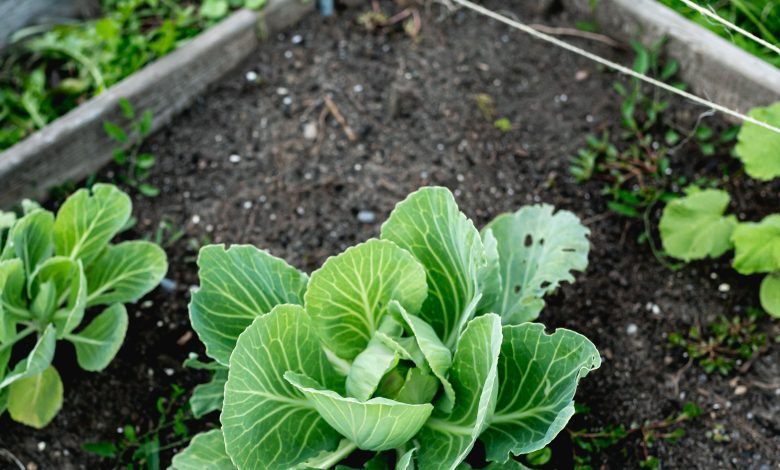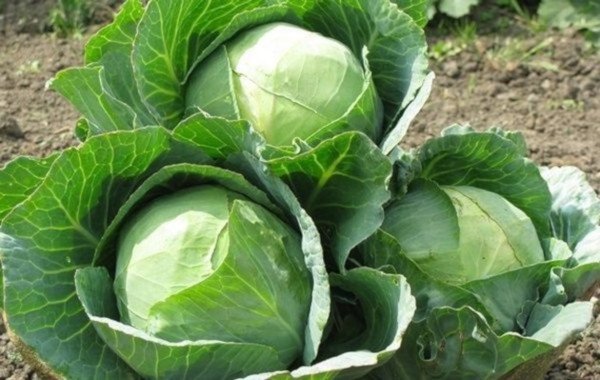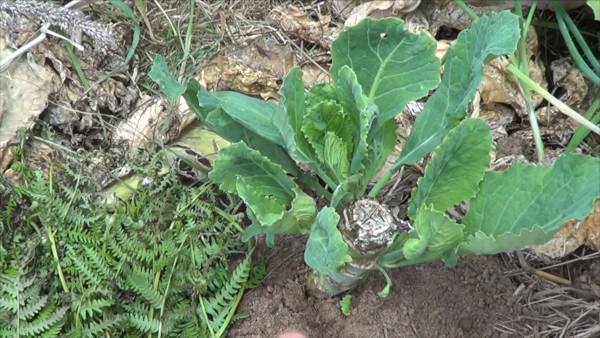How to Grow Cabbage in the Garden: Everything you need to know

Hello to all agrohuerters! Although we don’t want to admit it, autumn is getting closer and closer and we have to be prepared. The good gardeners and gardeners anticipate events and begin to think about what crops we will plant in the following season.

In today’s article we will learn how to grow cabbage, a fall crop, in our gardens. We will see how to prepare the land, when to sow, what care it needs and, finally, when we should harvest.
Cabbage Characteristics
Its scientific name is Brassica oleracea var. capitata and belongs to the brassicaceae family (also called cruciferae). Despite being grown as an annual, cabbage is a biennial herbaceous plant.
The edible part of the cabbage is its leaves and they acquire a characteristic shape of a compact bud as can be seen in the following image.
I’m not particularly good at cooking but we can eat cabbage cooked or raw in salads. It seems to be high in vitamin C, vitamin A, beta-carotene, calcium, and fiber. So it will be a good food in our diet.
Steps to follow to grow cabbage in the garden
1. How to plant and transplant Cabbage
Planting is always conditioned by the weather and depending on the country where you are, it will be sooner or later. In general, in the middle or end of summer we will have to make the cruciferous seedbeds (cauliflower, broccoli,…), in this case cabbage, to be able to transplant them in autumn. On the contrary, if we want to transplant the cabbage in spring, we would have to sow in mid-winter.
When making the seedbeds, the seed is deposited at a depth of 1cm. It is important to leave 2 or 3 seeds in each hole to ensure that at least one of them comes out. Once we have finished planting, we apply a good irrigation and… wait!
The ideal time for transplanting will be when the plants reach 10-12 cm in height. Normally, it is recommended to leave about 30 cm between plant and plant, and about 50 cm between rows.
2. Prepare the ground to grow cabbage
Before transplanting the cabbages to our garden it is important to carry out a good preparation of the land. It will be necessary to apply a lot of fertilizer because this plant requires a large amount of nutrients to grow and develop properly. For this reason, it is normal to apply compost, earthworm humus or another type of natural fertilizer. As they need moist soils, it should be ensured that there is at least 30 cm of soil depth.
An important aspect that we must not forget is to place our cabbages in a bright place since they will develop much better.
3. How to water cabbage
In general, all cruciferous plants usually need the soil to be always moist, so irrigation will be an important factor. We must water enough so that the soil is always moist. It is important to stop watering when the cabbages are already ripe, on the contrary, the heads can separate.
4. How and when to harvest cabbage
To know when we should harvest our cabbage is as simple as looking at how long the base of the heads is. To be able to catch them, it should measure between 10 and 25 cm and when you squeeze it with your hand, notice that it is solid and firm.
We must emphasize that there are 2 different varieties of this crop: early and late varieties. Below we will detail each of them:
- EARLY VARIETIES: their cycle lasts approximately 50 days. These varieties are smaller and do not withstand storage well, so they should be consumed as soon as they are harvested.
- LATE VARIETIES: unlike the early ones, these are larger, their cycle lasts about 80 days and they can last longer in storage.
We can harvest the cabbage with the help of a knife, separating the head from the stem. If we leave the stems in the ground we will get them to continue growing, obtaining new heads (this time smaller) that we can harvest again.

I leave you a link on how to grow vegetables in case you want more information.
Cabbage Pests and Diseases
Some of the pests or diseases that we can find in cabbage are:
- Pests: cabbage looper, whitefly, cruciferous waxy aphid, red cabbage bug, slugs and snails.
- Diseases: cabbage filly, dry rot, cruciferous mildew and black rot of cabbage.
Association of cabbage with other crops
We have already seen in other articles that not all crops are good garden companions. Therefore, we must pay special attention to the different associations we make between them. In the case of cabbage, there are some crops such as cauliflower, broccoli, tomatoes or strawberries that should not be placed in the same place. On the contrary, the association of cabbage with cucumbers or beans is favorable.
This is all for today, I hope you liked the article and that you start growing cabbage in the garden. See you in the next article!
Have a nice day!


![Photo of Pests and Diseases of Bananas: [Detection, Causes and Solutions]](https://www.complete-gardening.com/wp-content/uploads/2022/08/pests-and-diseases-of-bananas-detection-causes-and-solutions-340x220.jpg)

